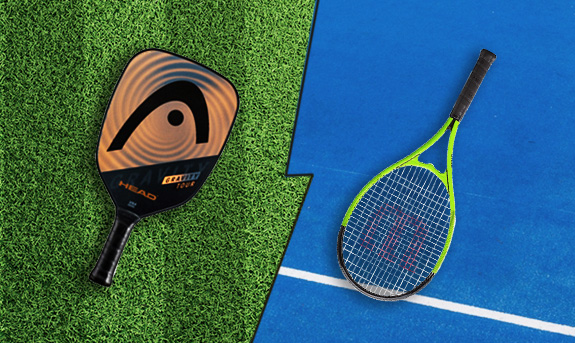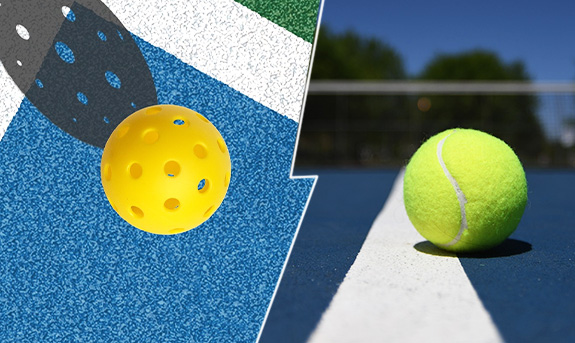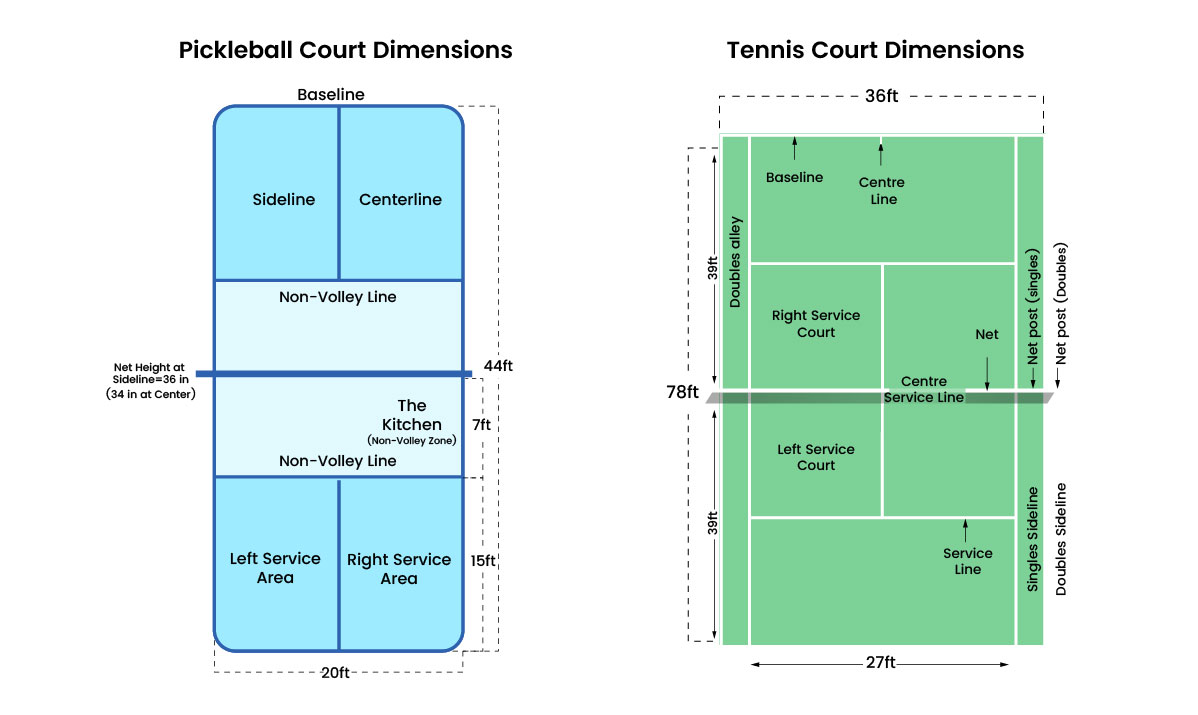Pickleball vs Tennis: Differences You Need to Know
As you embark on the journey to understand the nuances of racket sports, the comparison between pickleball and tennis emerges as a central theme. Both sports, beloved by enthusiasts worldwide, offer unique appeals and challenges that set them apart. While tennis has long been celebrated for its elegance and intensity, pickleball, a newer entrant to the sports arena, has quickly gained traction for its accessibility and fun gameplay. The importance of distinguishing between the two lies not only in appreciating their individual characteristics but also in making informed decisions about which might suit your interests and abilities better. Exploring the differences helps to shed light on what is pickleball and how tennis is played, deepening your understanding of both sports.
This article will delve into various aspects that distinguish pickleball from tennis, starting with the equipment used in each sport, such as the differences in pickleball shoes vs tennis shoes and the comparison between a pickleball net vs a tennis net. Furthermore, it will explain the rules and scoring systems unique to each game, the variance in court dimensions and surfaces, including the pickleball court size vs tennis court size, and highlight the differences in popularity and accessibility among these sports. By contrasting elements like the pickleball court vs tennis court and addressing the differences between badminton and tennis, this discussion aims to equip you with a comprehensive understanding of these engaging sports, guiding you towards choosing the one that resonates most with your sporting spirit.
Equipment Differences
When comparing pickleball and tennis, one of the most noticeable distinctions lies in the equipment used for each sport. Understanding these differences can enhance your appreciation of both games and help you choose the right sport for your interests and physical abilities.
Racquets and Paddles

Pickleball paddles, unlike tennis rackets, must be solid without holes or indentations to apply spin, with a maximum length of 24 inches from the edge guard to the butt cap and a hitting surface no longer than 17 inches. Tennis rackets, on the other hand, can be up to 29 inches long and 12.5 inches wide, featuring a stringed surface that allows for spin application. The design differences clearly cater to the unique gameplay of each sport, with pickleball emphasizing straightforward striking and tennis allowing more complex ball spins.
Balls Used

The balls in pickleball and tennis also show significant differences. A pickleball typically has a smooth surface and 26 to 40 evenly spaced holes must weigh between 0.78 ounces (22.11 gm) and 0.935 ounces (26.50 gm) and has a diameter between 2.784 and 2.972 inches, designed to have minimal bounce and slower air travel. Tennis balls are heavier, weighing between 1.975 and 2.095 ounces, with a higher bounce suitable for fast-paced gameplay, bouncing up to 60 inches high. This contrast in ball specifications results in varying gameplay dynamics, with pickleball offering a more accessible, slower-paced game compared to tennis’s faster, more physically demanding requirements.
Court Dimensions and Surface

Size and Layout
Pickleball courts are significantly smaller than tennis courts, measuring 44 feet in length and 20 feet in width, compared to tennis courts which are 78 feet long and 27 feet wide for singles matches. This size difference allows pickleball to be played in more confined spaces, making it more accessible. The net sizes also reflect this disparity, with pickleball nets being 22 feet wide and tennis nets spanning 42 feet.
Net Specifications
The height of the nets in pickleball and tennis also differs. A pickleball court net is 36 inches high at the posts and 34 inches high at the center, while a tennis net stands 42 inches high at the posts and 36 inches at the center. These differences in net height affect how the game is played, with the lower net in pickleball facilitating easier, more frequent volleys.
Playing Surfaces
While tennis can be played on a variety of surfaces including grass, clay, and hard courts, pickleball is primarily played on hard courts. The uniform hard surface in pickleball provides a predictable playing environment, which is particularly beneficial for beginners as it allows for consistent ball behaviour and easier skill development.
Rules and Scoring
Serving Techniques
In pickleball, serves must be underhand, striking the ball below the waist, which contrasts sharply with tennis where powerful overhand serves are the norm. This underhand method in pickleball not only makes the serve more accessible to beginners but also affects the pace and strategy of the game. Additionally, pickleball employs a unique two-bounce rule, requiring the ball to bounce once on each side before volleys can begin, which adds a strategic layer to the initial plays.
Scoring Systems
Scoring in pickleball is straightforward; only the serving team can score points, and games typically extend to 11 points with a requirement for a two-point lead to secure a win. Contrastingly, tennis uses a more complex scoring sequence of 15, 30, 40, and games must be won by at least two points, often leading to protracted deuce battles. This difference underscores pickleball’s emphasis on brisk, engaging matches compared to the potentially lengthier tennis encounters.
Gameplay Differences
The non-volley zone, or ‘kitchen,’ is a distinctive feature in pickleball not found in tennis. Players must avoid volleying from this zone, which is designed to prevent dominance at the net and encourage a more varied gameplay. Furthermore, the pickleball court is significantly smaller than a tennis court, which influences the game’s pace and players’ movement strategies, favouring quick reflexes and strategic positioning over sheer power and speed.
Popularity and Accessibility
Pickleball’s rise in popularity is significant, especially among diverse age groups and skill levels. It’s particularly appealing due to its easy learning curve, making it accessible to everyone from children to seniors. This inclusivity is evident as players range from amateur and semi-pro athletes familiar with racket sports to complete novices. In 2022, the number of U.S. pickleball players was nearly 9,000, a figure expected to grow significantly, highlighting its expanding community.
Ease of Play
Pickleball is praised for its straightforward play style. The sport’s smaller court dimensions reduce the need for extensive running, making it less physically demanding and more suitable for a wider age range. This ease of play contributes to its popularity, especially among seniors who find the game less strenuous yet still engaging.
Demographics and Trends
The demographic spread of pickleball players is broad, with a significant representation from the 18-34 age group, making up almost 29% of players nationally. Interestingly, the average age of pickleball players has decreased, indicating a growing appeal among younger participants. This trend is supported by the sport’s social aspects, where players often gather in groups, enhancing its community feel and accessibility.
The exploration of pickleball and tennis has illuminated the distinctive characteristics and unique appeals of each sport. Through the comparison of equipment, rules and scoring, court dimensions and surfaces, as well as the demographic appeal and accessibility, we have offered insights into what sets these sports apart, making it easier for enthusiasts to choose the one that aligns with their interests and physical capabilities. This understanding underscores the importance of recognizing and appreciating the nuances that define pickleball and tennis, not just as recreational activities but as sports with significant cultural and social impact.
As we reflect on the differences and similarities between pickleball and tennis, it becomes clear that both sports offer valuable opportunities for engagement, physical fitness, and community building among diverse groups. The rising popularity of pickleball, with its allure of accessibility and inclusivity, and the timeless appeal of tennis, with its depth of strategy and physicality, underscore a broader narrative of sports evolving to meet the needs of a changing demographic. Future research and discussion might further explore how these sports continue to influence each other and how they adapt to the growing demands and interests of players around the world.
FAQs
- What are the basic rules and court dimensions for playing pickleball compared to tennis?
Pickleball and tennis are played on courts of different sizes. A regulation pickleball court measures 44 feet in length and 20 feet in width, whereas a standard tennis court is 78 feet long and 36 feet wide for doubles. Both sports require the ball to be served cross court, but pickleball has specific serving rules: the serve must be underhand, and the ball must be struck below the hip.
- Why might someone prefer playing pickleball over tennis?
Pickleball is often favoured by those seeking a less physically demanding sport than tennis, particularly among older players or those with physical limitations like joint issues. It offers a good workout for balance, agility, reflexes, and hand-eye coordination, without the excessive strain on the body that can come with tennis.
- Which three sports does pickleball closely resemble?
Pickleball is a unique sport that combines elements of tennis, badminton, and ping pong. It is played on a court the size of a badminton court, with a net slightly lower than a tennis net, and players use paddles that are larger than ping pong paddles but similar in concept.
- How is pickleball distinct from other racket sports in terms of equipment and gameplay?
Pickleball differs significantly from other racket sports like tennis in several ways. The court used in pickleball is smaller, and the game uses lightweight paddles and plastic balls that have a low bounce. In contrast, tennis is played with heavier racquets and rubber-covered balls on larger courts. These differences affect the style and pace of the game.

